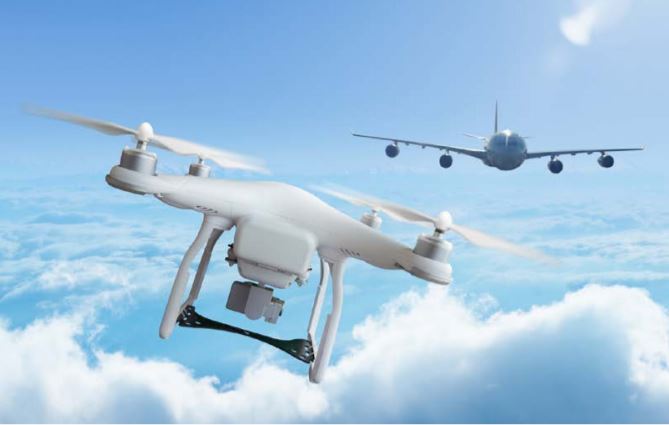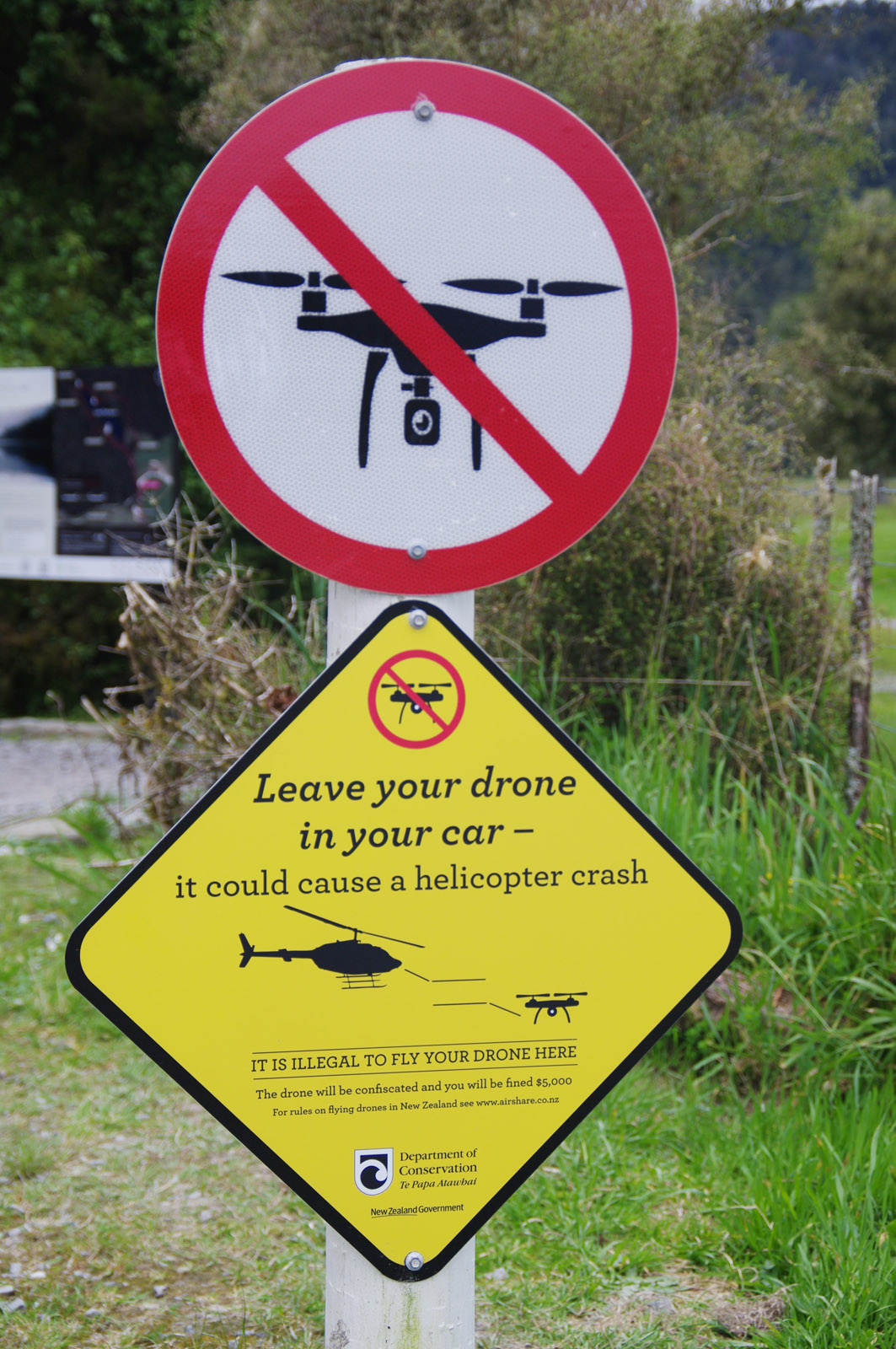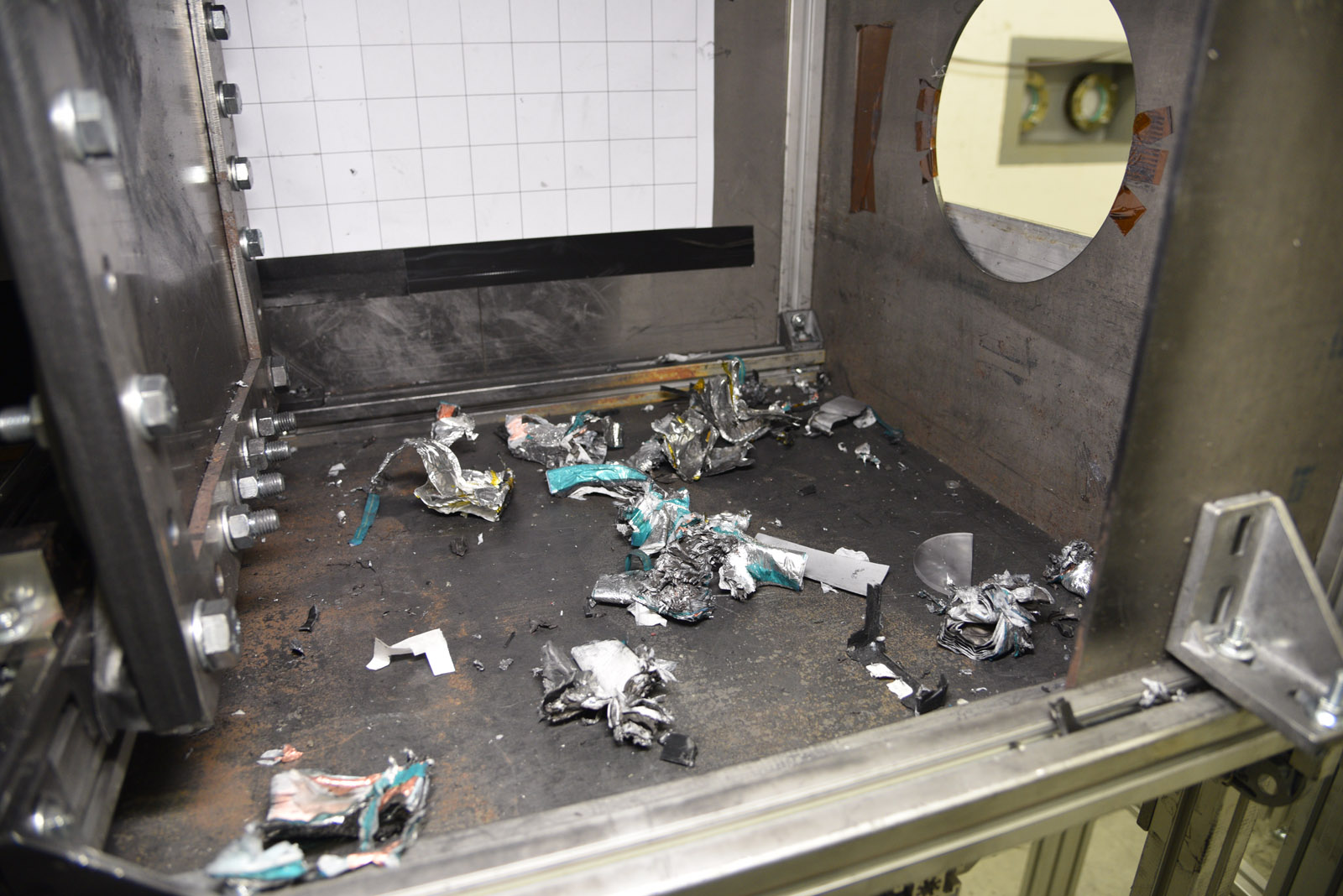Flight safety: test rig for drone collision tests
Reports of near-collisions between commercial aircraft and unmanned aerial vehicles are increasing. Tests against bird strikes are mandatory for aircraft, but there have been no standardized test procedures for safety in collisions with drones. That is about to change.


Drones are increasingly affecting air traffic, and the German Federal Police are even warning of a massive threat posed by unmanned aerial vehicles. In 2018, 158 incidents were reported at German airports. At the beginning of May this year, flight operations at Frankfurt Airport had to be completely shut down for a short time due to the sighting of a drone. Drones not only endanger landing commercial aircraft, low-flying helicopters are also threatened. Pilots particularly fear the impact on the cockpit windows, the leading edges of the wings and the engine. According to experts, a collision with drones damages aviation components more massively than a collision with a bird. However, while an aircraft's tolerance to bird strikes must be proven by standardized test procedures for certification, there are no corresponding regulations for safety in collisions with drones. A team of researchers at the Fraunhofer Ernst Mach Institute (EMI) in Freiburg sees a great need for action here. "Drones do not behave like birds in purely mechanical terms and also weigh significantly more. It is therefore unclear whether the safety of a bird-strike-proof aircraft is guaranteed in the event of a collision with a drone," says EMI scientist Sebastian Schopferer.
High risk potential
Initial impact tests with drone batteries and motors confirmed the potential hazard. "We used a compressed air accelerator to bring these two components of a commercial quadrocopter to different speeds - between 115 and 255 meters per second - and let them impact flat aluminum plates up to eight millimeters thick clamped in a test rig. In the process, the plates were significantly deformed and dented, and the drone components were completely destroyed," says Schopferer, commenting on the test results, which were recorded by a high-speed video camera. Batteries and motors can cause particularly great damage due to their weight.
The primary objective of the series of tests with the above-mentioned components is to determine the momentum transfer during impact and to investigate the damage pattern on aircraft materials, such as aluminum alloys and fiber composites. In addition to these dynamic tests, quasi-static compression tests are carried out in order to be able to determine parameters such as stiffnesses and strengths of the components. These play an elementary role in the derivation of numerically efficient, predictive simulation models, which the aerospace industry can use to gain new, important insights into the impact behavior of drones. This allows statements to be made about the drone impact resistance of new types of aircraft components as early as the design phase.
Acceleration tests with complete drones
In the next step, researchers at the Fraunhofer Institute for High-Speed Dynamics, EMI, are planning to build a new type of test rig (see image below). The test rig will enable complete drones weighing up to three kilograms to be accelerated to speeds of up to 150 meters per second. "With this, we are investigating the impact and fragmentation behavior of whole drones when they hit rigid and flexible targets to study the presumed catastrophic effect of a collision with aircraft. Experiments in this drone weight class are so far unique in the world," Schopferer explains. The experiments will be conducted with different variants; both hobby and semi-professional models with a mass of one to three kilograms will be used. Not only aircraft manufacturers are expected to benefit from the tests, but also regulatory authorities will receive important information with the results in order to be able to more comprehensively assess the risk posed by drones to air traffic.
Text: Fraunhofer Institute for High-Speed Dynamics, EMI

© Fraunhofer EMI
Switzerland adopts EU regulations on drones
Switzerland recently incorporated the European Union's various provisions on aviation safety, security and air traffic management into the annex of the air transport agreement. The most important piece of legislation is the new European Aviation Safety Framework Regulation. This covers unmanned aerial vehicles (drones) in particular.
New drone regulations require that drone pilots be registered starting in June 2020. The FOCA has started implementation work for the introduction of the European regulation. This will allow drone pilots to fly under the same rules throughout European airspace in the future. More about the new regulation here









